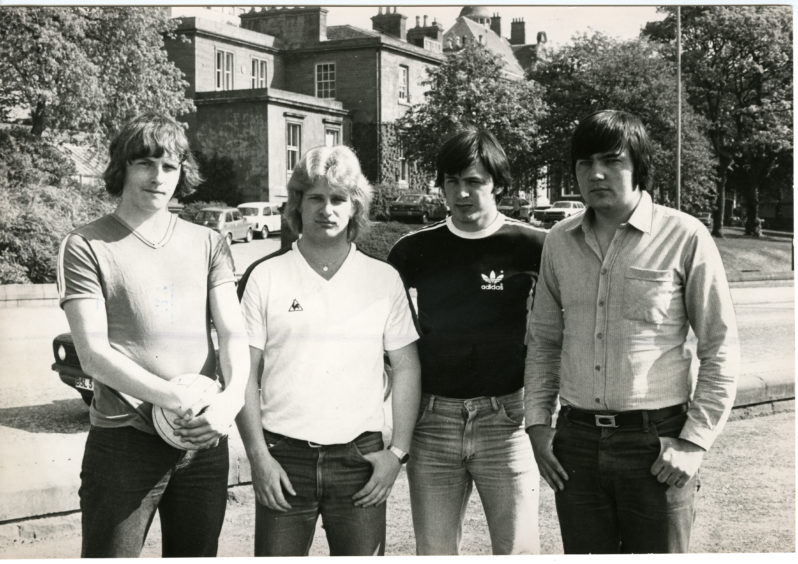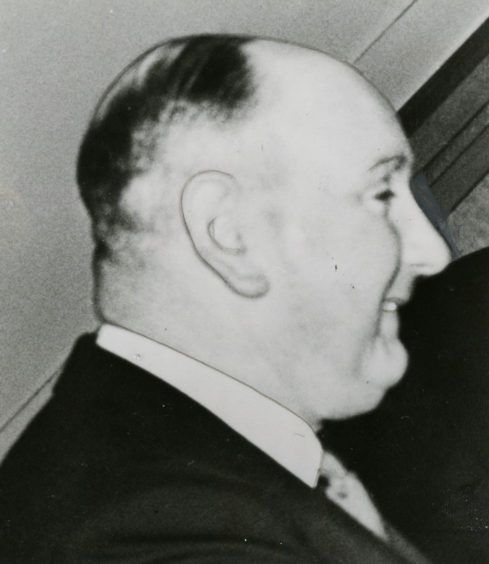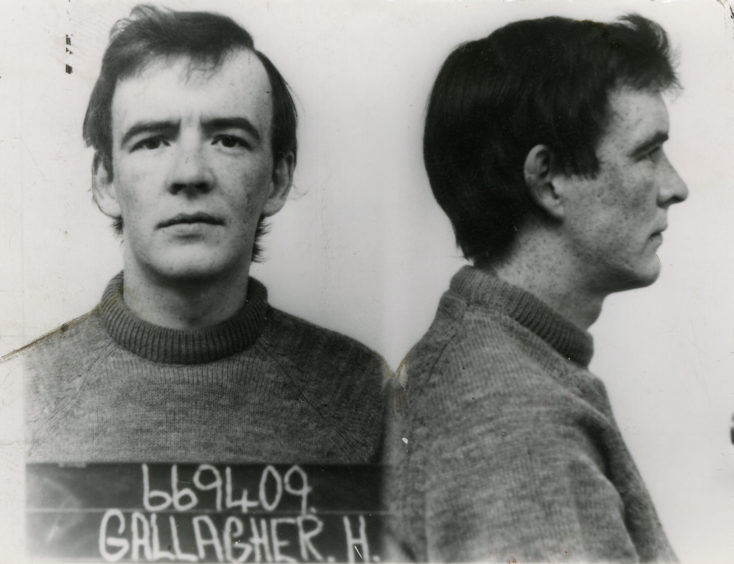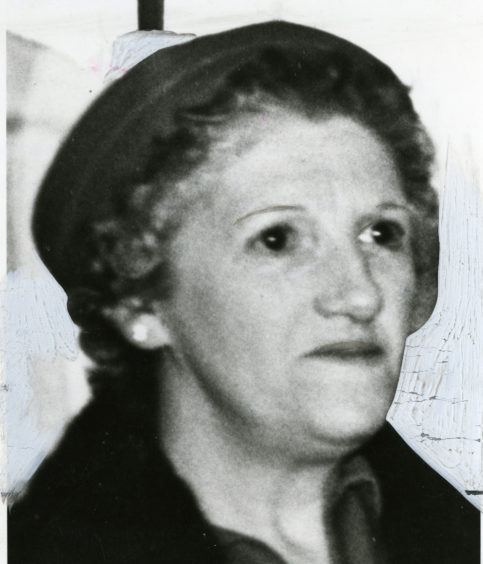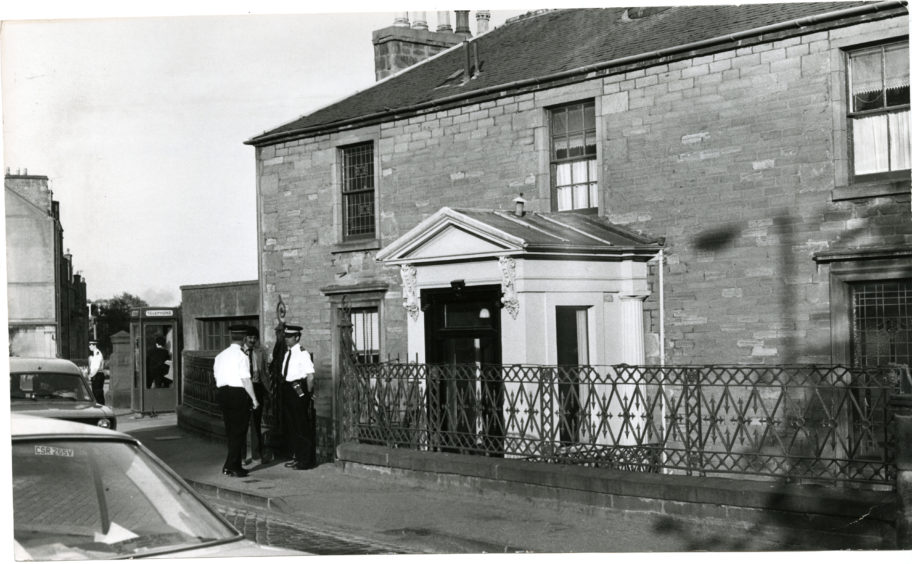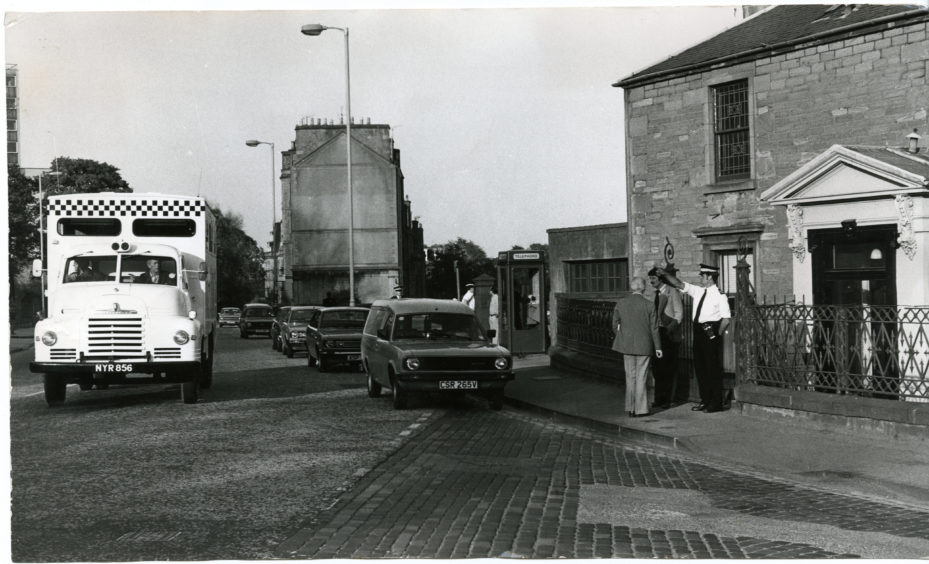
It was the gruesome Dundee double murder of an elderly couple which still haunts the city to this day.
Retired doctor Alexander Wood, 79, and his wife Dorothy, 78, described as “well nigh defenceless”, were hacked and beaten to death at their home in Roseangle 40 years ago on May 18.
The couple were found in a blood-soaked basement kitchen of their home.
Blood everywhere at Roseangle murder scene
The bodies were discovered by medical students Thomas McKee, Rod McKay, Derek Gourlay and Matt Wilson who were having a kickabout.
The students, all residents at Airlie Hall, were on their way to Riverside Park for a game when the ball went over the railings and into the garden.
Mr McKee went to retrieve it and spotted the bodies through the basement window.
“There was blood everywhere and it looked like there had been some sort of struggle,” he said.
“They were badly smashed up and looked like they had been there for some time.”
A mobile incident van was set up near the murder scene and 40 police officers carried out door-to-door inquiries.
The savagery of the attack shocked even experienced detectives.
Dr Wood, who had an artificial leg, could only walk with the aid of sticks, and had just left hospital a few days earlier.
Dr Alexander Wood, a popular GP
He had been a popular GP in Dundee since 1930 before retiring in 1975 through ill health.
The man leading the investigation, Detective Chief Superintendent Jim Cameron, described the level of violence as not “normal”.
He appealed to the city’s underworld to help root out the killer.
“Like any city we have our share of thieves but this degree of violence isn’t normal to them,” he said.
“I’m sure they share our abhorrence of this type of crime.
“My officers will be available at all times for any persons wishing to contact us about it.”
The killer also took around £2,000-worth of jewellery and silverware from the house in the couple’s blue leather suitcase.
Killer Henry John Gallagher
The killer was a 29-year-old Dundee man named Henry John Gallagher who had a history of attacking clergymen.
He had assaulted a minister in Dundee in 1972, attacked a priest a year later in Stockton and, during a break-in in 1979, he found the householders’ pet dog and cut its throat.
Although Dr Wood wasn’t a minister, his house was directly opposite the church, and could have been mistaken for the manse.
Gallagher had a long record of burglary and assault and had gone back home to Dundee following his weekend leave from Maidstone Prison where he was serving three years.
Following the double murder at Roseangle he fled to Kent where he attempted to get an identity card in a false name in order to leave the country and travel to France.
But he wasn’t finished and committed another double-murder, this time targeting frail Father Edward Hull, 88, and his defenceless housekeeper, Maude Lelean, 73.
Church confession
Gallagher had asked for directions to the Catholic church.
He was seen walking to the presbytery gate.
Gallagher went inside and confessed to the Dundee murders and Father Hull had called for his housekeeper.
Banging noises were later heard coming from the front room.
The parish priest went to the presbytery and found Father Hull lying dead with severe head injuries.
Miss Lelean also suffered head injuries but was still alive in another room.
The place had also been ransacked by Gallagher.
The elderly priest and his housekeeper were battered so badly that the murder scene was described as resembling an “abattoir”.
She died three days later in hospital.
Gallagher was captured seven days later after raising suspicions when he called at a vicarage in York and asked the vicar’s wife if he could wash the car.
He also asked to be directed to a Roman Catholic church.
She recognised him from a photo on television and phoned the police.
A manhunt was launched and Gallagher was detained following a police chase.
“I’m Gallagher,” he told police.
“I didn’t kill the old woman, just the priest.”
Ramsgate police later travelled to York to question him in connection with the double-murder.
Henry John Gallagher: ‘I’ve got to be cured’
Gallagher told them he was “going to come clean” and wanted to get it all off his chest.
“I don’t think I’m right in the head,” he said.
“I’ve got to be cured.
“I told a psychiatrist 10 years ago there was something wrong but he didn’t take any notice.
“If I go to prison then when I come out there will be more.”
He also made a statement about the Dundee murders.
“All I can tell you is I just kept hitting them,” Gallagher said.
“I don’t know what sparks it off.
“I just go into frenzies.
“I’ve got to get it cured before I do it again.”
Guilty plea
He told police that he broke in to the house in Roseangle and said Mrs Wood was going to call the police.
Gallagher said he didn’t object to that but claimed he was then struck by Mr Wood’s walking stick.
He said he “went crazy” and hit them both with the stick.
In December 1980 at Maidstone Crown Court he pleaded guilty to the Ramsgate murders.
He was detained at Broadmoor Hospital “with a restriction without limit on your discharge”.
The Lord Advocate ordered no further action against Gallagher in Scotland following the English court’s disposal.
Gallagher was never brought back to Scotland to stand trial for the Dundee murders.
It is believed he still remains in Broadmoor Hospital.
Roseangle murder case remains ‘unresolved’
Police Scotland said the case remains ‘unresolved’ despite Gallagher’s admission to police in 1980.
‘Unresolved’ murders are defined as being cases in which no one has been brought to justice, including those where suspects did not appear in court.
A police spokesman said: “I can confirm that the enquiry surrounding the deaths of Dr Wood and his wife Dorothy is recorded on the Scottish Homicide Database as an unresolved homicide.
“Police Scotland cannot comment on the status of any individual in respect of an unresolved enquiry, however I can confirm that to date, no one has stood trial for these murders.
“The recording of information has changed somewhat since 1980 and between legacy forces, however, I can confirm that since the inception of Police Scotland in 2013, there has been no new information received in respect of this investigation.
“Police Scotland are committed to fully investigating all homicides and will thoroughly explore any new information which comes to light.”
Dundee Conservative councillor Philip Scott said: “This is a remarkable building with history dating back to the early days of jute, one of very few left in Dundee.
“It’s well past time someone gave it a new purpose.
“I do credit Police Scotland because they haven’t forgotten about the tragedy of 1980.
“Now, the city is looking to the future and we need to do the same.”
The house at Roseangle is still empty 40 years after the double murder.
It was designed and built in 1815 by David Neave, originally for a merchant called David Martin.
Neave, who was born in Forfar, was the town architect for Dundee and designed a lot of the houses in the area, as well as in other parts of the town.
